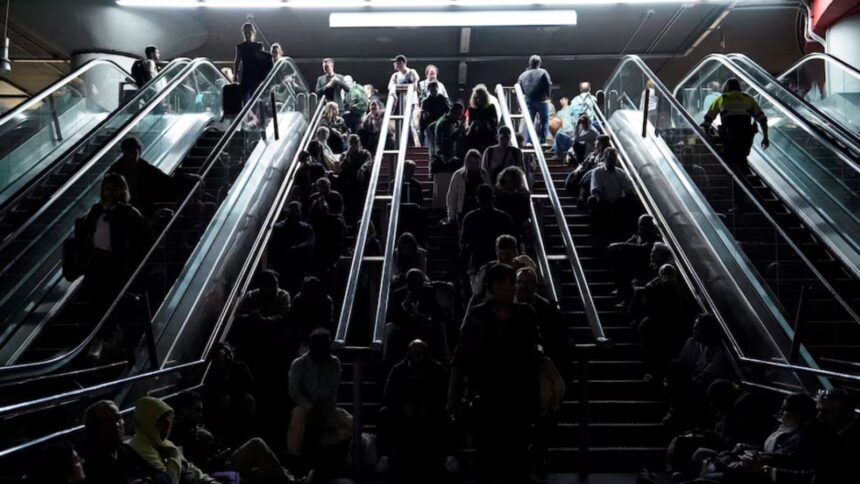Spain and Portugal Power Outage Update: An unprecedented power outage left millions of people in Spain, Portugal and parts of France without electricity since mid-afternoon Monday.
The outage plunged homes and shops into darkness, leaving people stuck inside lifts for hours and forcing chaos on the roads after traffic lights stopped working and commuters piled up at railways stations and airports.
The exact cause of the incident is unclear and still a subject of investigations. Early reports suggest a problem with the electricity connection between France and Spain could be one of the contributing factors to the outage, a representative of an industry body that represents Europe’s power sector said.
The interconnector incident, which likely left the Spanish grid disconnected from the European grid is unlikely to have been the sole trigger, and there is a high possibility of other supplementary triggers as well. Electricity interconnectors are essentially high-voltage land or subsea cables that connect two or more electricity systems.
Portugal’s grid operator, meanwhile, blamed a “rare atmospheric phenomenon” that caused “anomalous oscillations” in high voltage power lines in Spain, which led to the outage.
A “specific incident with an interconnector between France and Spain” occurred on Monday which led to “the Spanish grid (getting) disconnected from the broader European grid,” Kristian Ruby of Eurelectric, was quoted as saying on BBC Radio 4’s The World Tonight.
A cyber attack, which was being suspected early on, has been ruled out for now by both countries.
Grid balancing, also called frequency regulation, is a complex exercise that entails constantly matching electricity consumption by households, offices, and utilities such as metro networks to the electricity output by power plants. The big challenge in this exercise is that it is difficult to store electricity. So, on a real time basis, supply and demand must be constantly matched. Else, there is a risk of a blackout.
”Any interconnected grid is only as strong as its weakest link. Large grids are patched up with interconnectors, which are points of vulnerability. An interconnector failure potentially leads to a localised blackout, which can immediately trigger a frequency mismatch as the demand-supply equilibrium is disbalanced. That can then lead to a wider grid failure, as has happened in earlier instances. A system-wide failure of the kind seen in Spain and Portugal could have more than one trigger, which is perhaps why the grid managers are unable to pin-point the exact cause,” a -based power consultant with experience in utility management told .
The latest incident is likely to surpass Europe’s largest blackout to date, when over 50 million people in Italy and Switzerland were left without electricity for up to 12 hours in 2003. Then a major power line fault had caused a large outage in 2021, when an interconnector between France and Spain failed leaving a million people without power for some hours. An interconnector failure of this kind is the suspect this time around too.
There are two other likely factors that could have triggered this. One, that summer sets in earlier in the western extremities of Europe, starting with Portugal and Spain, leading to higher demand due to air conditioning load. Secondly, countries such as Spain are big on renewables, especially wind energy.
To operationally sustain high capacity addition of renewables to the electricity grid is challenging, unless there are viable energy storage options. As electricity grids around the world are increasingly being powered by renewables, this creates the problem of intermittency — a significant challenge from a grid management perspective.
In India, there have been two major grid failures over the last 25 years. In 2002, the northern grid collapsed due to a combination of fog and pollution getting deposited on the power lines and conductors, leading to an outage. Then in the wee hours of July 30, 2012, there was a disturbance in the NEW (north-east-west-north east) Grid, leading to the disconnection of the Northern Regional Grid from the rest that ultimately led to an outage, which plunged eight states into darkness.
Around 32 hours later, in the afternoon of July 31, another disturbance of the same kind then triggered the collapse of the northern, north eastern and the eastern grids, together affecting nearly 700 million people. This outage was one of the largest in the history of electric networks anywhere in the world.
The incident unfolding in Spain-Portugal would be watched closely by grid operators around the world, including in India.








